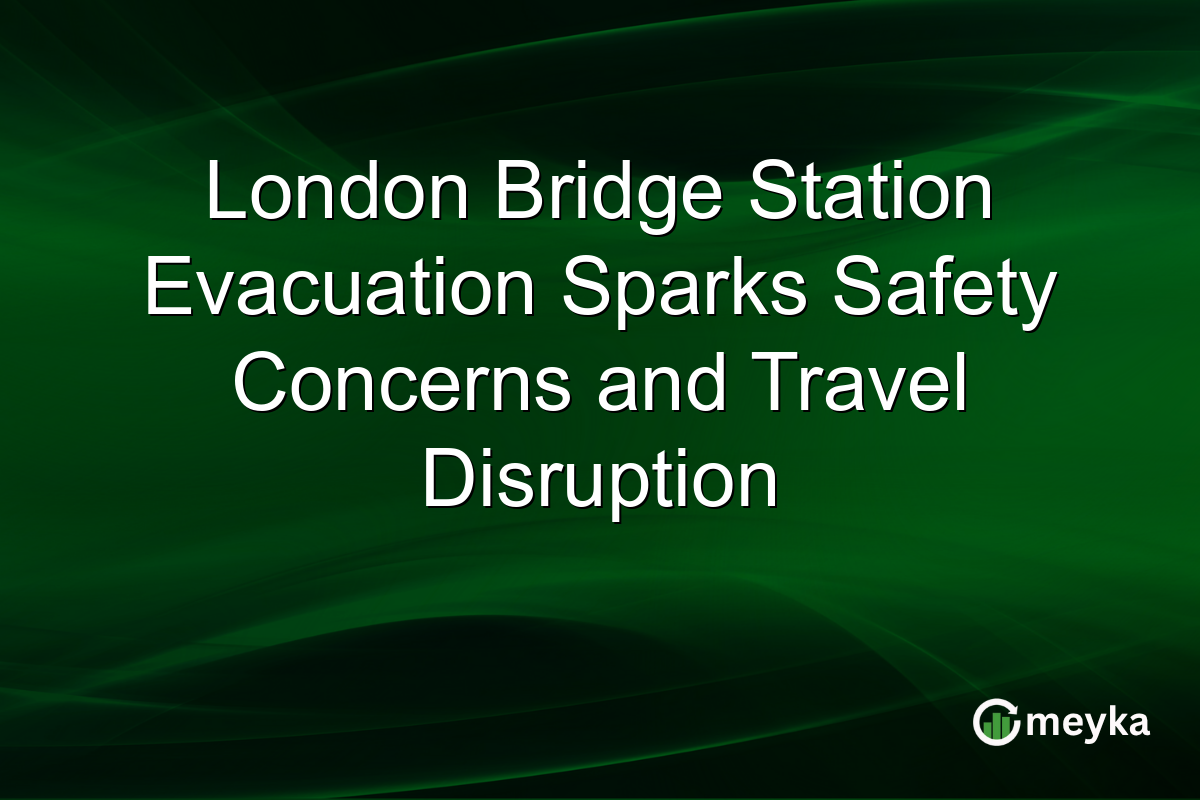London Bridge Station Evacuation Sparks Safety Concerns and Travel Disruption
The recent evacuation of London Bridge Station due to a security alert has sparked widespread concern over commuter safety and emergency preparedness in urban transport hubs. With thousands affected, this incident underscores the need for rigorous safety protocols and raises questions about the resilience of London’s transport infrastructure.
Understanding the Recent Evacuation
On October 15, 2025, London Bridge Station experienced a sudden evacuation triggered by a security alert. This major incident, affecting over 50,000 daily commuters, highlighted gaps in the existing safety protocols. As one of London’s busiest interchange stations, the ripple effect was felt across the city, causing significant delays and disruption.
The efficiency of emergency response teams is now under scrutiny, as commuters reported confusion and lack of clear communication during the incident. This shows the critical need for transparent and effective evacuation procedures.
Safety Protocols and Infrastructure Resilience
The evacuation incident shines a light on the current safety measures at train stations in London. Key concerns include outdated communication systems and inadequate emergency training for staff. Many commuters voiced their frustration on social media, emphasizing the urgency for upgrades in both technology and staff readiness.
Infrastructure resilience becomes even more crucial as London’s urban population grows. The integration of advanced security systems and regular emergency drills could mitigate future risks, ensuring commuter confidence and smooth operations.
Impact on Commuters and Travel Disruption
The London Bridge Station evacuation had significant travel implications. Immediate disruptions led to delays across multiple lines, affecting both local and national rail services. This event has intensified discussions around improving London transport resilience against unforeseen disruptions.
Commuters now demand quicker recovery plans and enhanced contingency measures. Enhancing real-time communication and providing alternative transportation options during emergencies are crucial steps the authorities must consider to mitigate future disruptions.
Final Thoughts
The recent evacuation of London Bridge Station has spotlighted serious concerns regarding commuter safety and transport infrastructure. The incident underscores the necessity for improved safety protocols, better communication systems, and enhanced resilience measures. Ensuring the safety of commuters should be a top priority as London continues to navigate the complexities of a growing urban population. Moving forward, authorities must invest in comprehensive strategies to enhance infrastructure resilience, ensuring that the city’s transport system remains safe and reliable.
FAQs
The evacuation on October 15, 2025, was triggered by a security alert. It caused significant disruption and raised questions about existing safety and communication protocols at the station.
With over 50,000 daily commuters affected, the evacuation caused widespread delays and frustrations, highlighting the need for improved emergency response and contingency plans.
Improving safety involves upgrading communication systems, enhancing staff training for emergencies, and integrating advanced security technologies. Regular drills and better contingency planning are also crucial.
Disclaimer:
The content shared by Meyka AI PTY LTD is solely for research and informational purposes. Meyka is not a financial advisory service, and the information provided should not be considered investment or trading advice.






